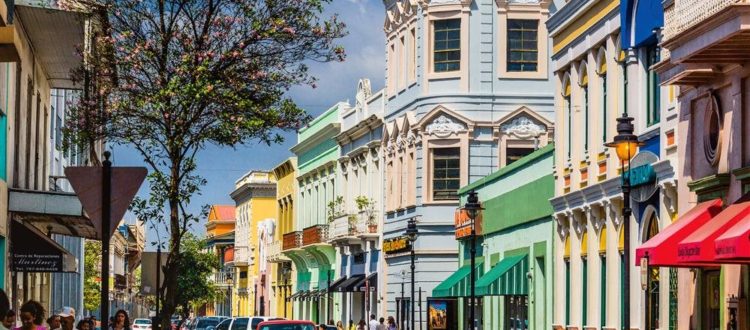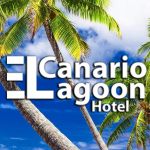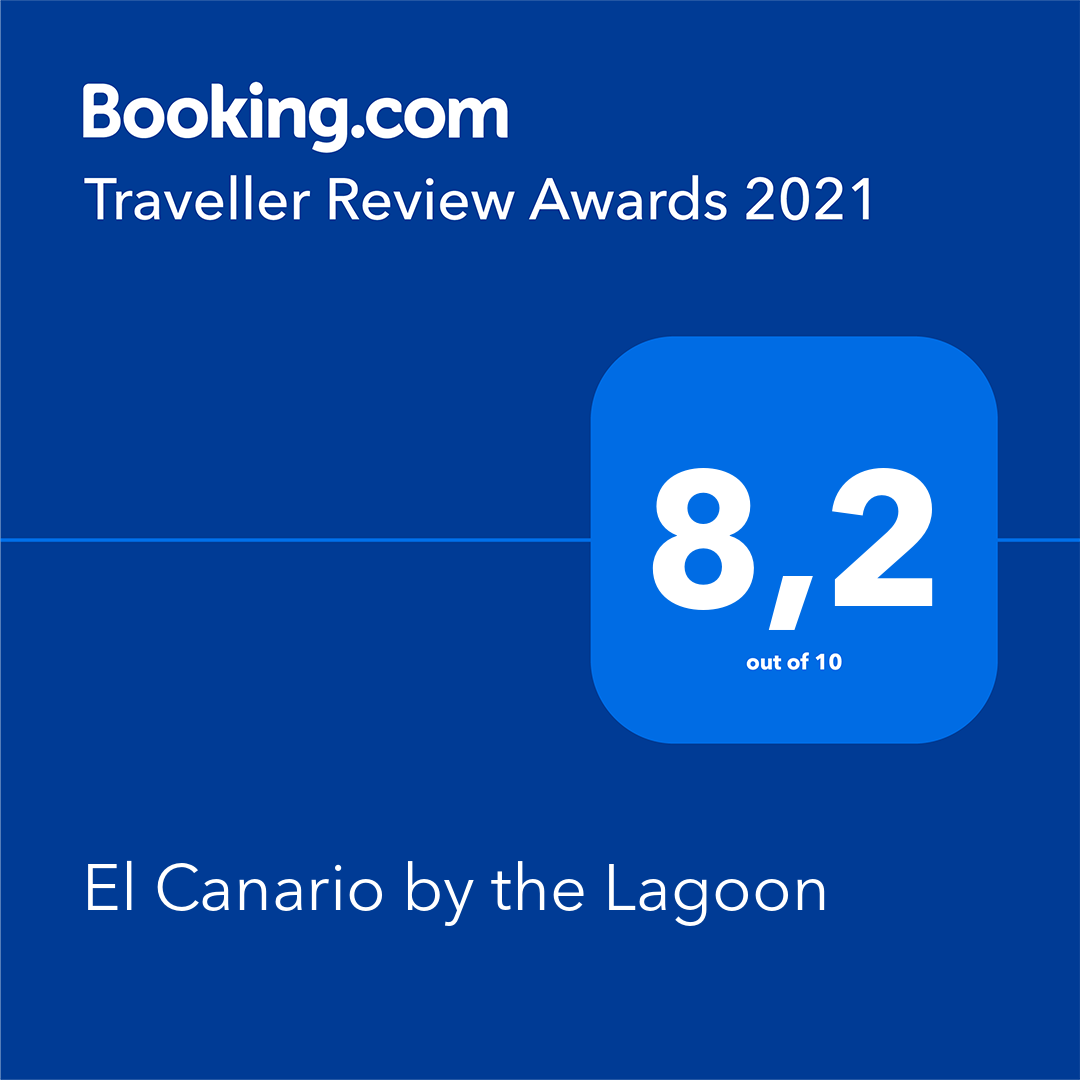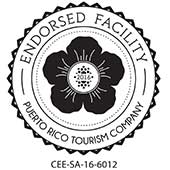Puerto Rico Caribbean, a hidden treasure
Puerto Rico caribbean island: A journey through the quaint caribbean island, in search of its beaches, colonial cities and jungles.
In Puerto Rico Caribbean island: A group of residents of all ages meets every Thursday evening at the foot of the wall of Old San Juan. 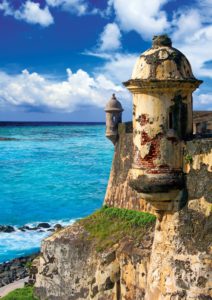 The scene: singing and dancing in a circle to the sound of several “cuatros”, the traditional Puerto Rican guitar, while the sun goes down giving a melancholy sunset. At nightfall, people group around the food that each has brought from home and travelers are received as one more. Summer nights are hot and sweaty bodies reveal the many long hours of party, which will last until the wee hours without anyone complaining to them for excessive noise.
The scene: singing and dancing in a circle to the sound of several “cuatros”, the traditional Puerto Rican guitar, while the sun goes down giving a melancholy sunset. At nightfall, people group around the food that each has brought from home and travelers are received as one more. Summer nights are hot and sweaty bodies reveal the many long hours of party, which will last until the wee hours without anyone complaining to them for excessive noise.
This is Puerto Rico: pure Caribbean, although nominally its declared a commonwealth of the U.S. The hispanic traveler that decided to embark on a Saturday night adventure in the streets of the historic district of San Juan, capital of the island and one of the most beautiful colonial cities in America, will feel that you’re in familiar territory territory,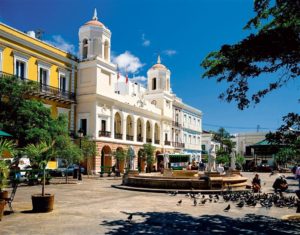 friend. There are bougainvilleas and palm trees, pleasant walkways lined with flower-filled balconies, homes painted in bright and cheerful colors, many people on the street, restaurants are open all night, couples cuddling and salsa music and “bomba”. These are all quintessential characteristics of Puerto Rico.
friend. There are bougainvilleas and palm trees, pleasant walkways lined with flower-filled balconies, homes painted in bright and cheerful colors, many people on the street, restaurants are open all night, couples cuddling and salsa music and “bomba”. These are all quintessential characteristics of Puerto Rico.
Old San Juan is also full of life in the morning. At first light, the colorful facades of “Calle del Cristo” or “San Sebastián” are witness to an intense coming and going of people, a human maelstrom that is lost in the path of straight roads built by the Spanish over 500 years ago. San Jose Square  is adorned with the statue of Juan Ponce de Leon ( 1474-1521 ), the conquistador who was the first governor of Puerto Rico. Just beyond the castle of San Felipe del Morro, a fort of the sixteenth century known as “El Morro” for its impregnable appearance faces the sea in sight.
is adorned with the statue of Juan Ponce de Leon ( 1474-1521 ), the conquistador who was the first governor of Puerto Rico. Just beyond the castle of San Felipe del Morro, a fort of the sixteenth century known as “El Morro” for its impregnable appearance faces the sea in sight.
100 miles long and 35 miles wide, the island of Puerto Rico is still a huge nature reserve. A mountain range cuts across horizontally across the center and in the east El Yunque is the only tropical rainforest outside of Hawaii. The rainforest of El Yunque, a relic of the wet vegetation cover that one day covered the Caribbean basin. Thanks to the 3,400 liters of rain it receives per year, el Yunque is home to over 240 species of trees and many other insects, birds and reptiles, like the tree frog coquis- scattered over more than thousand meters, where it is possible to distinguish up to four biotopes. Several are observed during route 45 minute walk to the tower of Mount Britton (941 m), often shrouded by fog.
About 74 miles from San Juan via the expressway, just across the island, Ponce, the pearl of the south coast appears. A stately town where neoclassicism redrew the colonial city; and there you will find the Cathedral of Guadalupe, La Perla Theater and City Hall to witness it. The most vibrant time of year occurs during carnival (February), one of the most famous in the Caribbean and also the oldest, since 1858. The central figure of the festivities are the “vejigantes” dancers using an inflated dry cow bladder and to hit viewers. The masks covering their faces are made using papier mache, with jagged horns and snouts.
dancers using an inflated dry cow bladder and to hit viewers. The masks covering their faces are made using papier mache, with jagged horns and snouts.
Although there is a very luxurious Puerto Rico catering to the American taste, with hotel fancy complexes which you do not need not leave in a week for entertainment, there is another Puerto Rico
more popular, which is much more appealing if you want to get to know the real country. That authentic version is embodied in the interior villages like San Sebastian, near which is the Gozalandia waterfall, a pond camouflaged by the jungle that offers a refreshing swim. They are also “real” beaches on the west coast ( Aguadilla, Mayaguez and Boqueron ), which may not look like the picture postcard paradise, but they are just as beautiful. Another surprising enclave are the next karst caves Arecibo in the north, among which stands out the Cueva Ventana, overlooking a wide valley bounded by mountains of Rio Grande.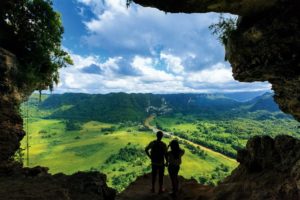
The other surprise of your future trip to Puerto Rico Caribbean Island will be that Puerto Rico is composed of three islands and not one: the Big Island, which takes its name from the country, and two smaller emerging off the northeastern coast of the former. These two islands are called Culebra and Vieques, and are, despite their small size, two environmental wonders of Caribbean excellence. Culebra can be reached in a half an hour ferry from Fajardo or fifteen minutes on a plane from San Juan. This island has what many consider the best beach of Puerto Rico, Flamenco Beach. No exaggeration to say that this is the quintessence of Caribbean beauties, where each element occupies its rightful place and 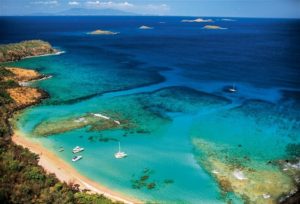 has the color we had imagined before crossing the Atlantic: the sand is white and the water, blue-green; It exhibits a pristine sky blue and deep green palm trees .
has the color we had imagined before crossing the Atlantic: the sand is white and the water, blue-green; It exhibits a pristine sky blue and deep green palm trees .
Vieques Island is also connected from the port of Fajardo by boat, just over an hour, or ten minutes Fajardo plane from the same or from San Juan. Until 2003, 70% of the island was a military base and then became declared a nature reserve, hence saving itself from the construction of huge hotel complexes. Most travelers come to Vieques to enjoy one of the most curious phenomena of marine nature: the bioluminescent waters of Mosquito Bay, where a high number of microscopic organisms (dinoflagellates) which have the particularity of emitting light is concentrated when agitated. It is here where it looks best and that is due to a series of reasons: on the one hand,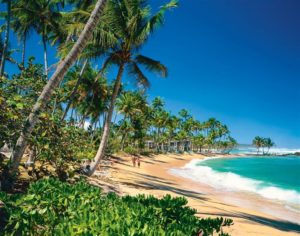 the great contribution of organic nutrients of mangroves that surround the bay and, secondly, the scant renewal of its waters.
the great contribution of organic nutrients of mangroves that surround the bay and, secondly, the scant renewal of its waters.
The curious phenomenon is known as “Sea of Ardora” and has been documented in other 200 places in the world. This phenomenon is the fire that ancient mariners said they saw and the strange lights that surrounded the Nautilus ship in the novel 20,000 Leagues Under the Sea by Jules Verne. At nightfall in Mosquito Bay, shallow and calm waters of the bay become a giant firefly whenever something, whether fish or swimmers, moves the surface of the water. Back to San Juan, there is still time to enjoy the nearby beaches of Dorado. Lying in the sun or diving, we think of the contrasts that make Puerto Rico one of the most attractive spots in the Caribbean. From the luminescent bays to the malls where everything is sold; dancing to salsa and natural reserves; colonial balconies, caribbean beaches and resorts; burgers and rum. Puerto Rico is the irony of a country that haggles in English, pays in dollars and has a Latin Heart.

